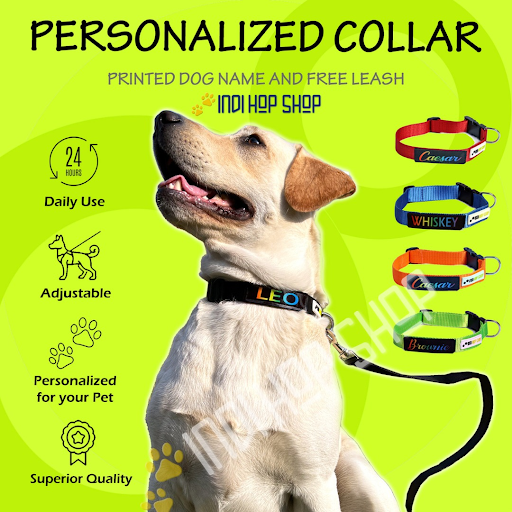A Complete Guide: Selecting Pet Supplies for Your Unique Pet

Your particular pet’s health and happiness depend on choosing the correct pet supplies. This detailed resource provides insights and recommendations to help you decide. This page covers all elements of pet care, from knowing your pet’s needs to choosing food, toys, bedding, and grooming items. This guide will guarantee your favorite pet receives the greatest care and lives a healthy and happy life.
Introduction
The correct pet supplies for your specific pet are crucial to their health and pleasure. To suit their demands, you must provide your dog, cat, bird, fish, or other pet with the right supplies. This detailed guide will help you choose pet products that meet your pet’s needs by highlighting key variables. From food and water bowls to toys and grooming supplies, we’ll cover everything you need to keep your pet safe and comfortable. Let’s discover pet supplies together!
Understanding Your Pet’s Unique Needs
Choosing the correct pet supplies requires knowing your pet’s needs. Each pet has unique needs to stay healthy, happy, and well. Knowing your pet’s demands helps you choose supplies.
Pet Species Research
Research your pet’s species to learn about its environment, behavior, and food. This helps you choose the right habitat and supplies for your pet. Consider their size, longevity, activity level, and species-specific health issues.
Individualizing Your Pet’s Needs
Understanding your pet’s species’ needs is vital, but so is assessing its unique needs. Like people, pets have different personalities, interests, and needs. Observe and engage with your pet to determine their needs and preferences.
Housing and Environment
Pet housing and habitat should be considered. Some pets need a large cage, while others need a specialized habitat or temperature control. Research your pet’s optimal living circumstances and make sure your supplies meet their demands.
Diet and Nutrition
Understanding your pet’s nutrition is vital to their health. Research and contact a vet about your pet’s species-specific diet. Think about food kind, portion amounts, and your pet’s dietary needs.
Exercise, enrichment
All pets need exercise and mental stimulation. Determine your pet’s activity demands and provide them with toys, accessories, or equipment to stay active. Consider their energy levels, play preferences, and species-specific exercise needs.
Health and Wellness
Know your pet’s health and wellbeing needs. Your pet’s health depends on regular veterinary visits, immunizations, and preventative care. Some pets need special grooming products or treatments for health issues.
Interaction and Socialization
Your pet requires socializing and engagement. Some pets need people or other animals for company. Playdates, training sessions, or acceptable companions can help them socialize.
Knowing your pet’s demands helps you choose pet supplies. Consider species, individual needs, housing, nutrition, exercise, health, and socializing. Understanding and meeting these requirements will make your pet happier and healthier.
Selecting Food and Treats
Choosing pet food and treats for your specific pet involves various criteria. Select goods designed for your pet’s species and age because animal nutritional demands vary. Note these important points:
Nutrition by species
It’s important to provide your pet with species-appropriate food and treats. Carnivores like dogs and cats need animal protein, whereas herbivores like rabbits and guinea pigs need fiber. Research your pet’s species’ dietary needs to guarantee proper nourishment.
Age-appropriate selections
Like people, dogs have various dietary demands at different ages. Senior pets may benefit from formulas for their aging bodies, while puppies and kittens need food that promotes their growth. To ensure your pet gets enough nutrition, choose life-stage-specific pet food and treats.
Consider allergies and dietary limitations.
Pets with dietary limitations or allergies need special attention. If your pet has allergies or sensitivities, consider eating foods and treats without those substances. Ask your vet about dietary limitations and product suggestions.
Quality ingredients
High-quality ingredients are vital when choosing pet food and treats. Choose goods with actual meat or protein instead of fillers or byproducts. Avoid items with artificial preservatives, colors, or flavors, that might harm your pet.
Read and comprehend labels
Read and comprehend pet food and treat labels. Products should fulfill nutritional requirements set by respected organizations like the Association of American Feed Control Officials. Product labels should indicate the assured analysis, which specifies minimum protein, fat, fiber, and moisture percentages.
Choose the Right Housing and Bedding
Choosing pet housing and bedding for your specific pet involves various aspects. Correct housing and bedding may give your pet comfort, security, and a healthy environment. Important factors to consider:
Type and Size of Housing
The first step in choosing pet housing is considering its size and demands. Different pets need different housing, so select one that fits their size and species. Small animals like hamsters and guinea pigs need a cage with numerous levels and hiding spaces, while reptiles need a terrarium with temperature and humidity controls.
Materials and Construction
Pet safety and comfort depend on housing material and structure. Make sure the housing is non-toxic and robust enough for your pet. Cages with wire bars for tiny mammals should be thin to prevent escape or harm. Select a housing material that is easy to clean and maintain.
Airflow and ventilation
Airflow and ventilation are crucial for pet health. Make sure your housing has enough ventilation to avoid stale air and dampness. Reptiles and amphibians need precise temperatures and humidity, thus this is crucial. Consider mesh or wire casing for ventilation and security.
Substrate, bedding
Your pet’s comfort and hygiene depend on the bedding or substrate. Research and choose the right bedding for your pet. Rabbits and guinea pigs may benefit from hay or paper bedding. Reptiles may need coconut fiber or reptile carpet to simulate their native environment.
The Importance of Mental Stimulation
Mental stimulation prevents boredom, and tension, and enhances pet well-being. Enrichment and toys can help your pet solve problems, avoid disruptive behavior, and improve cognitive capabilities.
Selecting Toys
Choose mental stimulation toys based on your pet’s species, size, age, and interests. Consider these factors:
Safety: Make sure toys are non-toxic and don’t contain little bits that might choke or swallow.
Give your pet a variety of toys to keep them interested. Textures, forms, and interactive elements may test the mind.
Puzzle toys stimulate the mind by requiring problem-solving. Find toys with goodies or secret sections to help your pet learn how to get them.
Interactive toys that respond to your pet’s motions may bring hours of mental entertainment. They may move, make noises, or give rewards when your pet plays with them.
Activities to enrich
Enrichment activities may boost your pet’s mental stimulation together with toys. Some ideas:
To make mealtime more fun, use food-dispensing toys or puzzle feeders. These toys encourage problem-solving by making your pet work for their food.
Hide & Seek: Hide snacks or toys at home or in a play location. This exercise trains your pet to find hidden treats using their senses.
Training and Tricks: Teaching your pet new tricks or instructions stimulates them mentally and deepens your relationship. Make training fun with positive reinforcement.
Sensory Play: Engage your pet’s senses with textures, fragrances, and sounds. Toys, play mats, and outdoor exploration can help.
Supervise your pet during playtime and alternate toys to keep them interesting. By offering a range of toys and enrichment activities, you can provide your particular pet with the cerebral stimulation they need to thrive.
Products for grooming and dentistry
Proper pet cleanliness is vital to their well-being. Buy pet-specific brushes, combs, and shampoos. Pet toothbrushes and toothpaste can also prevent dental disorders and promote oral health.
Pet-Safe Cleaning Products:
To avoid chemical exposure to your pet, use pet-safe cleaning solutions while cleaning. Look for pet-friendly or natural cleaning products. Safely store cleaning materials to avoid ingestion or exposure.
Pest Control Items
Fleas, ticks, and mosquitoes pose a serious health risk to pets. Talk to your vet about the best pest control options for your pet. Topicals, collars, sprays, and oral drugs are options. Monitor your pet for side effects and follow the recommendations.
Pet-Safe Homewares and Plants
Avoid poisonous plants and household things to keep your unique pet safe. Lilies, azaleas, and several ferns are harmful to dogs. Cleaning agents, pharmaceuticals, and some foods can also harm your pet. Find pet-safe alternatives to make your pet’s home safe.
Always put your individual pet’s health and safety first. You can protect and nurture your pet with the correct health and safety supplies.
Conclusion
Finally, picking the correct pet supplies for your specific pet is crucial to their health and pleasure. You can offer your pet the right food, shelter, grooming supplies, toys, and health and safety goods by understanding their needs. Consider your pet’s nutrition and health while choosing food and treats. Select high-quality, nutritious foods that suit their nutritional demands.
Mental stimulation and boredom prevention depend on toys and enrichment. Toys that keep your pet entertained should match their likes and inclinations. Finally, get flea and tick preventatives, dental care, and first aid supplies for your pet. This detailed guide and consideration of your pet’s needs will help you purchase the proper pet products to make them happy and healthy.




